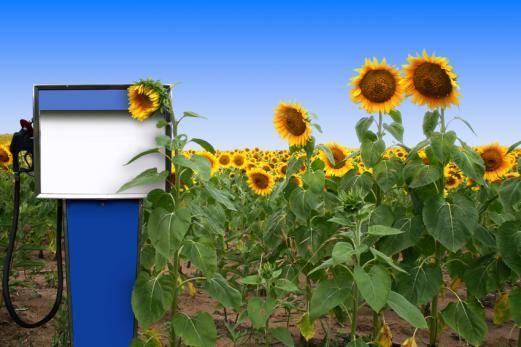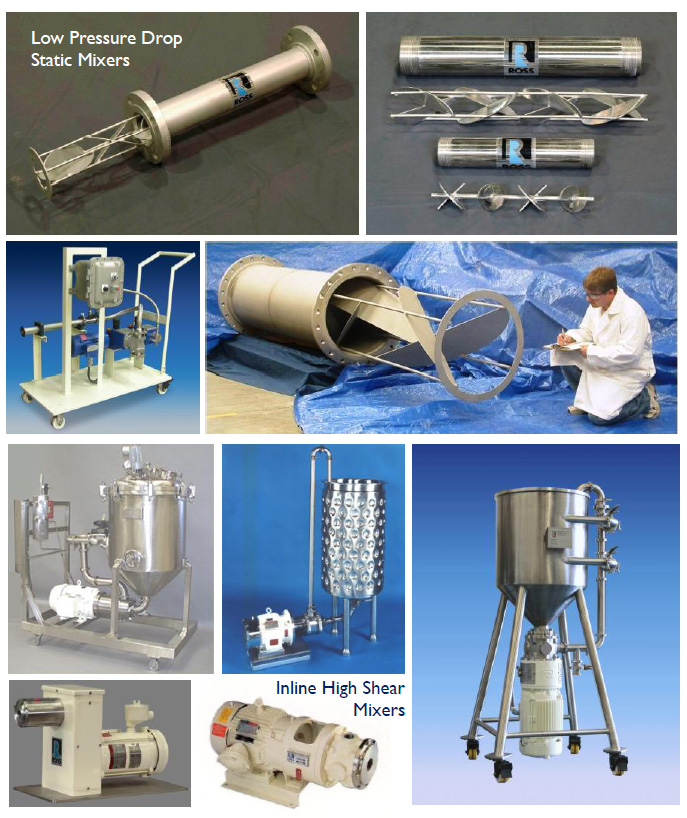Tech Report
Recommended Mixing Equipment for Biodiesel

Application Summary
Biodiesel is a fuel derived from vegetable oils and animal fats. Oil from palm, jatropha, coconut and soybeans, as well as waste cooking oil, are some of the typical feedstocks for biodiesel production. In its pure form ("B100"), biodiesel is a suitable alternative fuel for diesel engines but to date, it is more popularly used as an additive to petroleum diesel. "B20", for instance, is a blend of 20% biodiesel and 80% petroleum diesel which results in lower levels of particulates, carbon monoxide and unburned hydrocarbons.
In a chemical process called transesterification, the triglycerides in oil or fat are reacted with an alcohol in the presence of a catalyst, usually a strong alkaline. This reaction yields alkyl esters (biodiesel) and glycerin. Proper mixing is required to maximize yield and reduce impurities.
Ross Static Mixers
Ross Low Pressure Drop (LPD) Static Mixers are used in different stages of biofuel production, typically in conjunction with batch stirred tank reactors. For example, triglyceride feedstock, alcohol and catalyst are pumped through a Ross Static Mixer with 4, 6 or more elements to pre-mix and heat the components on their way to the main reactor or series of reactors. The Static Mixer can also be installed in a recirculation loop for continuous mixing of the components during reaction.
LPD Static Mixers consist of baffles or "elements" discriminately positioned in series. Each element is comprised of a pair of semi-elliptical plates set at a 45-degree angle with respect to the central axis and 90 degrees to each other. Additional elements are rotated 90 degrees about the central axis with respect to the previous baffle set. As the product moves through each element, flow is continuously split into layers and rotated in alternating clockwise and counterclockwise directions. This method of subdividing the flow and generating striations leads to highly efficient and repeatable mixing with minimal pressure loss. During turbulent flow, both the random motion of molecules and formation of eddies are significantly enhanced in the LPD.
Energy for mixing is supplied in the form of pressure by the pumps delivering the fluid components. Since there are no moving parts in a Static Mixer, it is basically maintenance-free and can be installed as easily as any piece of pipe. The LPD Static Mixer can be supplied as a removable insert designed to fit an existing pipe or as a complete module with flanged or threaded connections.
Ross Inline High Shear Mixers
Another type of inline mixing device utilized in biodiesel production is the High Shear Mixer which is also used to recirculate product through a reactor. Rigorous mixing and emulsification of immiscible phases such as methanol and soybean oil, for instance, help to expose more surface area or "reaction sites", increasing yield and reducing reaction time. Compared to the Static Mixer, the more aggressive High Shear Mixer is capable of not only distributive mixing but also dispersive mixing and droplet size reduction.
The Inline High Shear Mixer consists of a rotor/stator assembly installed in a housing with inlet and outlet connections. Inside the mixing chamber, product components are subjected to high levels of mechanical and hydraulic shear as the rotor turns within a close tolerance stator at tip speeds ranging from 3,000 to 4,000 ft/min. The resulting mixture is then expelled at high velocity through holes in the stationary stator.
In some ways similar to a non-priming centrifugal pump, the Inline High Shear Mixer can easily recirculate low viscosity fluids without additional pumping assistance. Unlike tank-mounted stirrers, inline rotor/stator mixers are very versatile and able to service multiple tanks of virtually any size.
